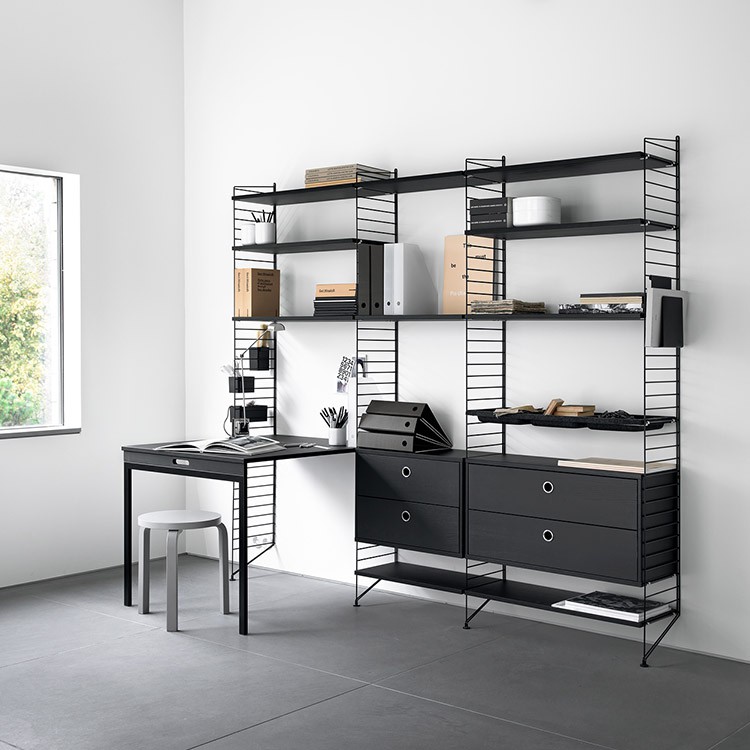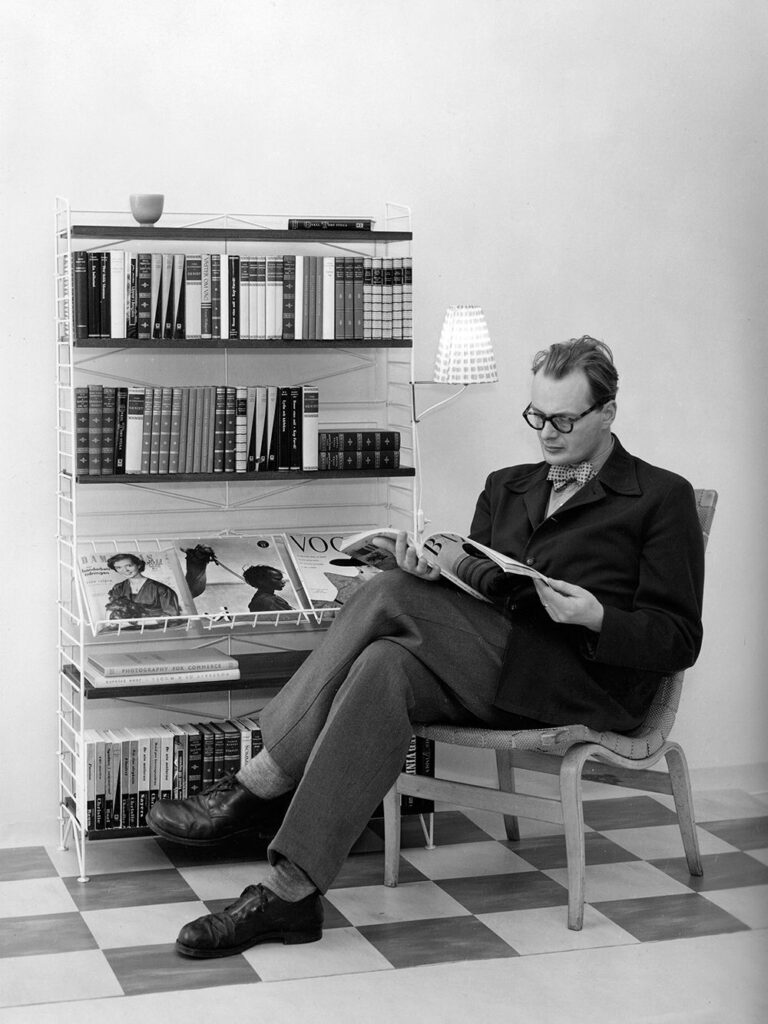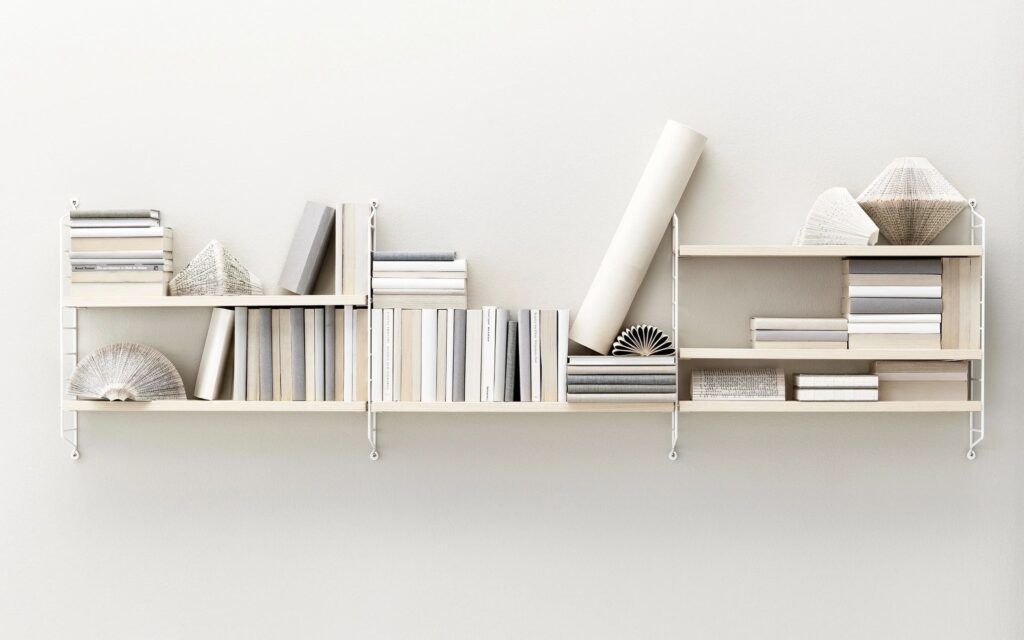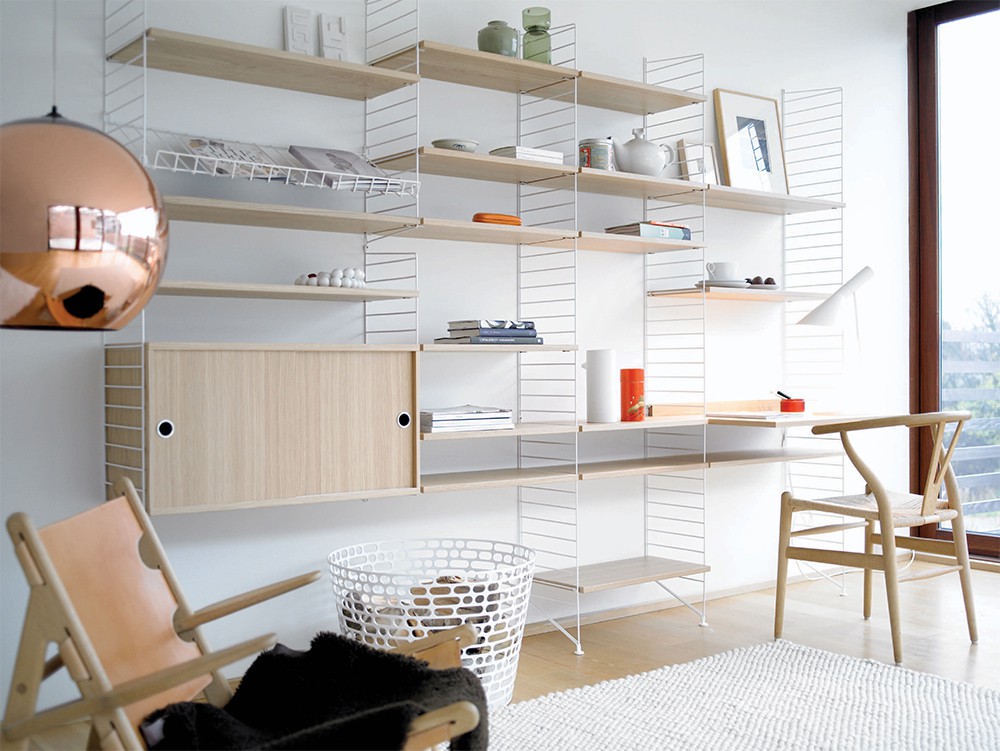String – Iconic Shelving With Endless Modern Possibilities

String is a great thing! Who even invented it? It’s ubiquitous, useful, simple and elegant in design, which is presumably why the iconic string® shelving system was given its name. Though the name of its originator – Nils Strinning – may also have had something to do with it.

A basic, easily applied shelving system, string is a consistent winner. It was awarded the Excellent Product Design award in the Office category at the German Design Awards in 2016.

Here’s what the jury had to say:
jury statement:
anne højgaard jørgensen | hartmut schürg | aleks tatic
‘string works is an innovative and ground-breaking collection of furniture which turns the workplace into a fully-functional, flexible yet friendly and visually-appealing location. the consciously minimalist shapes follow a functional design language that manages to avoid being too cold or clinical. an exceptionally friendly and inviting series that effortlessly bridges the narrow divide between office and private use. refreshingly different.’
 So how long is a piece of string? Or more intriguingly – how long can the popularity of ‘string’ shelving last? When Nils Strinning developed his string® interior design concept in 1949, in collaboration with his wife Kajsa, he was really onto something. In the middle of the 20th century, Swedish publishing house Bonnier launched a national competition – design an effective, functional bookcase – and ‘string’ was the outright winner, out of 194 entries. It’s been going strong ever since. This iconic brand is still gaining recognition, awards and sales today.
So how long is a piece of string? Or more intriguingly – how long can the popularity of ‘string’ shelving last? When Nils Strinning developed his string® interior design concept in 1949, in collaboration with his wife Kajsa, he was really onto something. In the middle of the 20th century, Swedish publishing house Bonnier launched a national competition – design an effective, functional bookcase – and ‘string’ was the outright winner, out of 194 entries. It’s been going strong ever since. This iconic brand is still gaining recognition, awards and sales today.

So what’s the big deal? Well if you’re familiar with the modern-day global interiors phenomenon that is Swedish brand IKEA, then you’ll know that Scandinavian interior and product designers like to keep things streamlined and simple. Coming from an area of the world that can be dark to the point of melancholia, even depression, it is understandable that Nordic designers are inspired by light, open housewares, artifacts and interiors. Many of our well known, everyday interior products and design classics have originated in Scandinavia and many of them come from a mid-20th century modern design aesthetic.

Why do some things just last and last? Well ‘string’ is light, so it is cheap to transport. It is also easy to assemble and can be put together in many configurations. You can store books (as Bonnier publishing house so famously appreciated); you can incorporate wood in cupboards and drawers to make it into furniture storage; and you can use it in the kitchen. When Strinning perfected a method of coating steel wire with the functional and efficient medium of plastic in 1946, the ‘laddered’ side panels of ‘string’ were made possible and three years later ‘string’ shelving was born.

In 1953 ‘string plex’ came into production. This had clear perspex side panels and was particularly desirable in steamy, as well as sleek, areas like kitchens and bathrooms.

This small, modern day ‘string’ modular shelving system ‘string pocket’ works brilliantly in the bathroom, as it is easy to clean and easy to put on the wall. It also has a pared back, industrial look. It can be small, or it can be big – just build it up (or hone it down) as much as you like.

After the addition of ‘plex’ to the range in 1953, the string stable got more sophisticated. The plastic ‘ladder’ sides (as pictured above in a contemporary application) make the shelves almost seem to float, and the system is strong, versatile and hygienic. Gaining a Gold Medal in the Milan Triennale in 1954, string has been marketed ever since around the world and it is every bit as popular today, winning global awards and recognition. It’s a prime example of design following function – and gathering a loyal following along the way. It just does what it does – really, really well.




